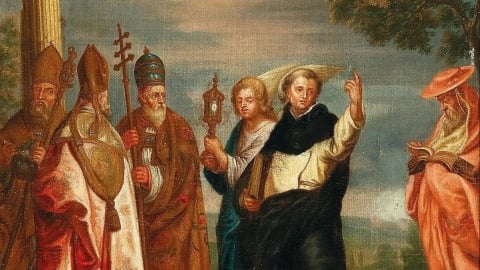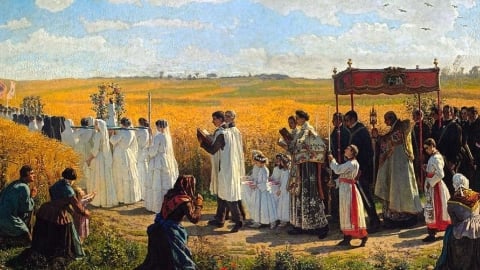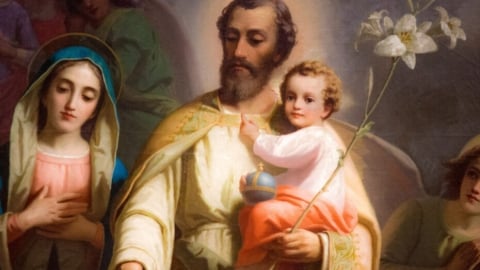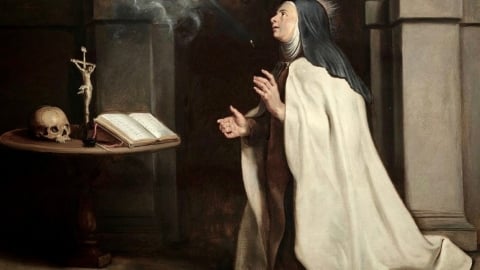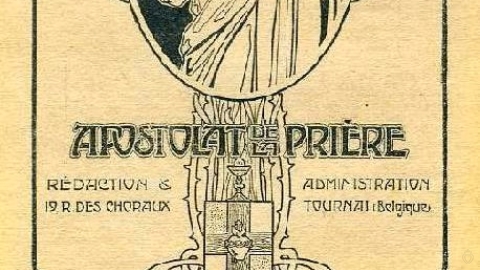Passion Sunday - The Two Trees
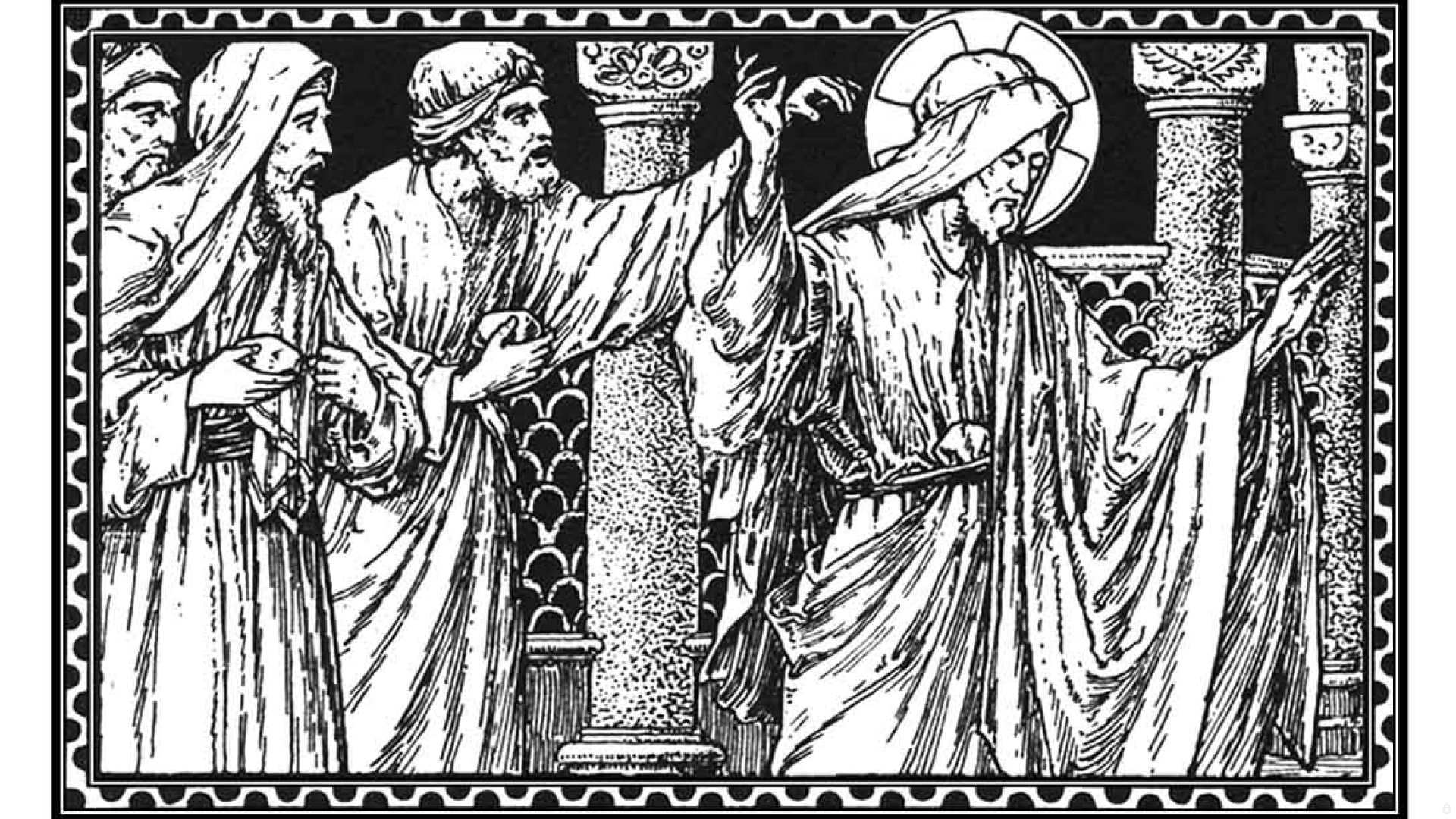
The idea of sacrifice is something so universal, so pervasive, so woven into the texture of creation, that it has rightly been described as the "pattern of reality" as we know it. Nature reminds us of it every day in the sun.
which dies each night to be reborn each morning; it reminds us of it in the rhythm of the year, which dies in Winter and is reborn with the Spring. The history of humanity reminds us of it, for sacrifice appears in all its pages. The myths of humanity remind us of it-in their stories of the hero who goes down into the dark places, the caverns or the seas, and meets and slays the dragon, and so rises again into a new life. These myths are the expression of humanity’s dreams, which accounts for their universality. And men's sacrifices are their attempt to turn the dream into reality. For in all sacrifice you find a single pattern: the animal is slain, the wine is poured out, as a symbol of man's self-offering to God; and it is hoped that then the Deity will accept the offering, and in some way "enter into it," and so the offerers, communicating in the victim, will themselves be divinized, will themselves find divine life. Always in sacrifice there is that double movement, the offering up to God and the receiving of life from God; and all these dreams and longings of humanity are fulfilled in the one perfect sacrifice which is the self-offering of Christ.
Double End of Calvary
Man was so remote from God, always reaching up, never attaining, be- cause only love can reach up to God; and in man there is the deep poison of egoism, the poison that kills love. But then the Word is made flesh in order that He may share the sorrows of humanity, and that by making the perfect sacrifice, the perfect act of love, He may bring back the divine life, may lead humanity home. For on Calvary it is precisely that double movement that is fulfilled: the sacrifice ends, not with the death on the Cross nor with the burial in the tomb, but with the entrance into His glory and then, through our communion with the glorified Victim, with the sending of the Spirit of Love into the hearts of men. Before Cal- vary, St. John tells us, "the Spirit had not yet been given, seeing that Jesus had not yet been glorified." But when the Passion is consummated, the pattern can be fulfilled in its wholeness: the first movement of self-offering is completed on the Cross and in the tomb, and the second movement follows in the Resurrection, the Ascension, and the Coming of the Spirit.
So, the Epistle tells us how Christ, by His own blood, His own self- offering, enters into His glory, as the high priest of old entered the Holy of Holies: Christ enters through the tabernacle not made with hands, the heavens, into the eternal Holy of Holies which is the glorification of His Humanity at the right hand of the Father. But He goes as our High Priest, semper vivens ad interpellandum pro nobis (ever living to make intercession for us); He goes to prepare a place for us-a place made possible for us by the Tree, if only we for our part take our share of what was done upon the Tree.
Symbols of Life and Death
For this descent and re-ascent, this death and resurrection, is the pattern of Reality in this sense, too, that it describes what is for us a psychological necessity. "Unless a man be born again... only he that loses his life shall find it...." We have to go down, or be taken down, into the dark places in our turn; we have to meet and slay our dragon, our particular forms of egoism and pride and greed; and so we renounce the tree which became the symbol not of life but of death, the tree which stands for the rejection of God by man, the tree of pride. And in its stead we find the Tree, decora et fulgida, which gives us back life because it gives us back love.
"Deliver me from my enemies, O Lord," the Gradual sings today, “teach me to do Thy will." The two aspects of the same thing-greed, egoism- these are the enemies; and to be delivered from them into love is to be taught to do the will of Love. Our self-offering is to be like His, to be total: in the power of Christ we are to say with Christ: "All that I have and am, all my life, it's all Yours: tell me what to do." We are to try to make that single total act of self- giving, to put ourselves utterly in God's hands; we are also to recall and repeat that offering as new events present themselves, new decisions have to be made. Always "Father, into Thy hands" and so we share in the fruits of the Tree, we share in the dark journey and in the renewal of life.
Difference between the Two Trees
That is the difference between the two trees: the difference between true Christianity and false. Many of us cling to the old evil tree; we cling to our egoism. It is possible to lead a very respectable Christian life, to keep the commandments quite well, to go regularly to church, to be engaged in many good works, and still not be really a Christian, not really choose Christ's Tree, because in all that we do we are self-reliant and self-complacent, we refuse the dark journey, we refuse to put ourselves totally into God's hands. So it was that the Publican went down justified from the Temple, not the Pharisee; so it was that Our Lord spoke of the publicans and sinners being the first to enter the king- dom. If our only way of being righteous is to be self-righteous, then it would be better for us to be among the sinners who know their need of God and love Him from afar.
But to put ourselves thus unreservedly into God's hands is to be strong and secure. "Often have they fought against me from my youth," the Tract tells us, "but they could not prevail over me." Evil cannot prevail over the soul self-given into God's care. But more than that: a sacrifice of that kind is always creative; in a sacrifice of that kind the double movement-of offering first and then of blessing is always fufilled. If you offer God your sense-life, and to ex- press that offering you make an act of self-denial on the sense level, then in fact you are doing something creative because you are helping to restore the senses to their true fulfillment, their true function: you are working to liberate them from the prison of autonomy-that false independence into which they are lured to their own destruction and to restore them to their rightful place in the wholeness of the personality. If you put into God's hands your love of nature or of art, an ideal, an ambition, and to express that offering deny yourself some of the joy that those things would bring you, then you are perfecting them: you deepen your vision of them, you purify your love of them, you give them their proper function, which is to be part of your life with and your love of God.
"I honor My Father," Our Lord says in the Gospel, "I seek not My own glory." Sacrifice must always be a sacrifice of praise to God, a giving of love to God. But then the blessing inevitably follows: if, as the Offertory tells us, we confess to God with our whole hearts and keep His words, then inevitably He for His part "will enliven us according to His word." The Spirit is sent forth and we are recreated; and so it is that through sacrifice the face of the earth is renewed.
Social Implications of Christ's Sacrifice
"The face of the whole earth." Once again we must not forget the social implications of these things. The sacrifice of Christ is a cosmic sacrifice: in His self-offering the whole of creation, which travailleth even until now, is offered; in His glory the whole of creation is renewed. The Collect of today's Mass prays for the whole of God's household, matter and spirit alike; and the Church brings to the sacrifice-not just the bodies and souls of those present but the whole Church, the whole human family, and, more than that, the whole of life, the arts and industries of man, the earth itself and its fullness. We are to identify ourselves, at the Offertory, with the bread and wine which are the materials of the sacrifice, that we too may be offered to God with Christ and transformed by God in Christ; but we bring the whole of our lives, all the things that make up life on earth, for they too must be offered and blessed. It is the face of the earth that is to be renewed.
The Saints, who have made perfect their own sacrifice in the sacrifice of Christ, have this power to bring renewal to the world; for instance, they tame and make friends of the wildest of animals as well as of the wildest of men. The Consummatum est of Christ on the Cross marks the completion of the self-offering, but also the beginning of the New Life. And the Ite missa est of the priest at the altar marks the completion of the same self-offering and of the official work of the official priesthood, but also the beginning of the work of the common priesthood of the laity, the bringing of the New Life from the altar to the world of everyday affairs. That work-man's sharing in Christ's continuing redemptive work on earth-is a work of healing: the primitive Church thought far more vividly than we of the New Life as healing that household of which the Collect speaks, healing men's souls, and hearts, and bodies too. And if we try to make our Lenten sacrifices the creative things they ought to be-making the materials of our lives the bread and wine of sacrifice and so allowing them to be transformed by the hands of God-then inevitably, when we return from our altars of sacrifice to the everyday world, we shall return more fit to carry out the office of the common priesthood, more able to help in completing the victory of Tree over tree, to help in fulfilling, in and with Christ, God's eternal plan, who, as the hymn tells us, when Adam's sin had brought death from the first tree, destined the second tree to repair the damage wrought by the first.
Ipse lignum tunc notavit Damna ligni ut solveret.
